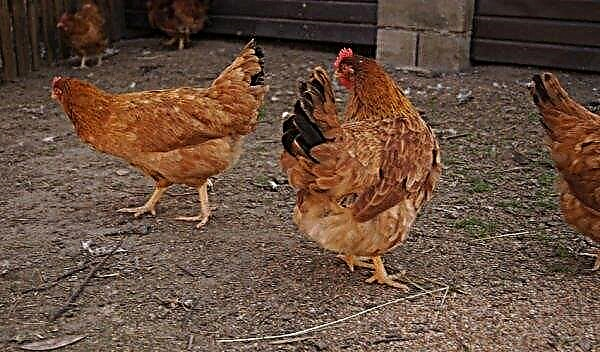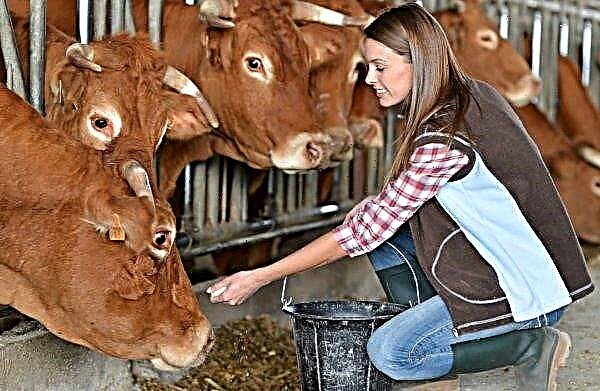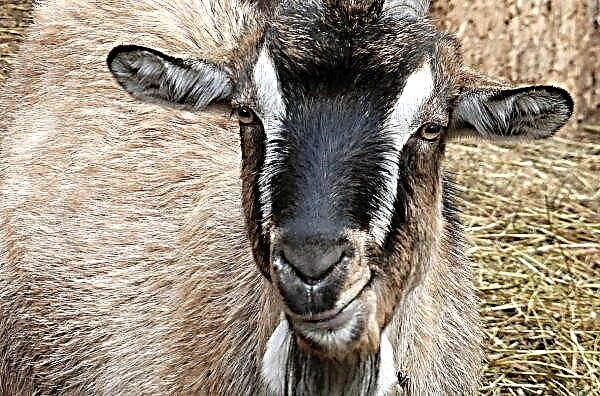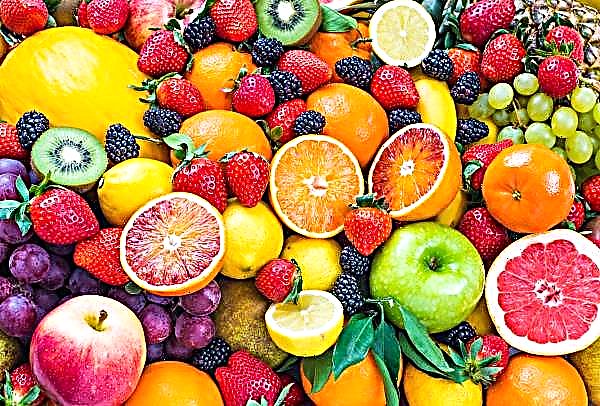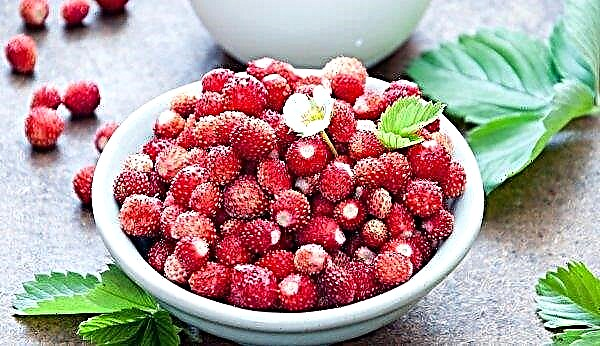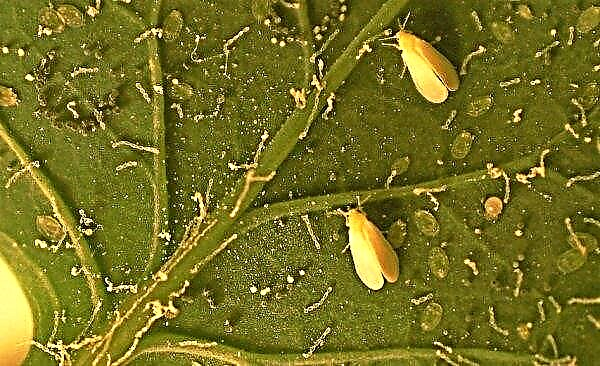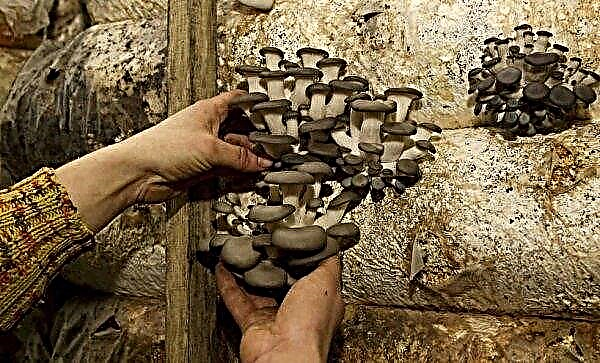The popularity of garlic is determined not only by its taste. According to the scientific research and experience of many generations, it has a positive effect on human health. This is the reason for the constant growth in demand for this product, with which the interest of summer residents and vegetable growers in the features of growing garlic is growing.
Garlic yield
The cultivation of this vegetable is done by both ordinary gardeners who grow products for their families, and industrialists who supply vegetables to shops, bazaars, etc. In the first and second cases, it is important to know how much crop can be obtained per hectare or hundred, depends on the yield of the variety or other factors.
Important! To be sure of the quality of the seed, it is better to buy it from a certified supplier.
Spring
To begin with, it should be noted that varieties of garlic spring crops are intended for planting in early spring. These varieties include: "Ukrainian White", "Moscow", "Tier", "Early", "Cyril". 
They are usually used in the household, or in areas where winters are very severe and winter plants do not have time to produce crops. Spring garlic has a less pronounced taste and pleasant soft flesh. The yield of spring varieties is on average 15 tons per 1 ha. With one hundred parts, you can collect about 150 kg.
Important! It is better not to plant varieties of spring garlic in the ground, where before that potatoes, tomatoes or onions grew. The best predecessors for such a vegetable are cabbage, pumpkin, root crops or green crops.
Winter
Winter varieties of garlic include “Lyubasha”, “Spas”, “Kharkiv Violet”, “Sofievsky”, “Messidor” etc. The vegetables of these varieties are best planted in autumn. They normally tolerate cold and yield a much larger crop than spring crops - that is why winter varieties are much more often used for cultivation for industrial purposes. From one hectare of a typical winter variety, an average yield of 20–25 tons can be obtained. From 1 hundred parts a crop of 200 kg is obtained.
Factors Affecting Yields
A large number of factors affect the yield of such a vegetable. In order to achieve good productivity in the cultivation of garlic, you must first familiarize yourself with their list.
Among the factors affecting the yield of the product in question, it should be noted:
- variety (the most fruitful are: "Sofievsky", "Alekseevsky", "Gribovsky anniversary", "Lyubasha", "Sail", "Spas");
- time and depth of landing;
- proper preparation of planting material;
- thorough care (watering, top dressing, pest protection);
- soil and its chemical composition.
How to increase the yield of garlic
To achieve maximum results in the cultivation of this vegetable, you must:
- Choose the right landing time. In the case of winter varieties, the best time for this is from the end of September to mid-November (the date must be chosen so that vegetables can take root before the first frost, but have not yet had time to sprout). If you chose spring garlic, you need to plant it in early spring, as soon as the snow melts and the soil is ready for planting.
- Prepare material for landingby disassembling the heads into separate cloves and selecting from them the largest, intact and healthy looking. Also, planting material must first be treated from fungal diseases and nematodes - for this, a fungicide solution is used, in which the teeth should lie for 30 minutes.
- Break out arrows. Most varieties of this plant are shooter. For a good crop, the arrows of garlic must be removed when they reach 10-15 cm in length.

In addition, you need to prepare the soil in which you are going to plant garlic:
- the soil should be fertile, with a high concentration of humus;
- the soil should be loamy sandy, moist, but not wet (pH should be 6.5–7);
- should be planted in soil in which over the past 2 years have not been grown: radishes, carrots, all kinds of greens or herbs;
- the soil for such a vegetable does not need frequent loosening, which can cause its spraying, deterioration of the structure, excessive dryness or acceleration of the humus mineralization process;
- 2-3 months before the start of planting the seed in the soil, start the weed control: apply the herbicide to the soil, which contains glyphosate.
Important! If you grow garlic in black soil, be prepared for the fact that the husk of the vegetable turns out to be too contaminated, it will be poorly cleaned, and the heads themselves will not be suitable for long-term storage.
Garlic Care Features
One of the most important factors affecting the yield of a given product is plant care. It includes not only the preparation of soil and seed for planting, but also proper watering, fertilizing the vegetable, protection from pests and common diseases.
Watering
The optimum level of moisture in the soil is the most important condition for obtaining a good crop. With insufficient amount of natural rainfall, it is necessary to carry out regular watering of plants every 10 days. If you grow these vegetables in the dry period, you need to water them even more often - once every 5 days.
Garlic especially needs moisture during the period from germination to the formation of cloves. The water used to increase the moisture level in the soil where such a vegetable grows should be warm (15–18 ° C). After irrigation, the soil needs loosening at a depth of 2-3 cm. This should be done the next day after moistening the soil.
Did you know? In ancient Greece and ancient Rome, garlic was the main medicine. Boiled in water along with other plants considered to be medicinal, it was used as a healing, analgesic and disinfectant. Due to the fact that garlic has such a number of beneficial properties and an unusual taste, Pythagoras called this vegetable the king of spices.
Top dressing
The quantity and qualitative composition of top dressings to be carried out for garlic depends on the quality of the soil and the region where the plant is planted. As a rule, during the first vegetation period (when the plant begins to grow green mass), liquid mullein is used. Also during irrigation, you can use a yeast solution, which not only saturates the soil with useful substances, but also protects plants from damage by fungal diseases.
Pest and disease protection
Among the pests that can harm garlic, there are:
- aphids;
- onion fly;
- stem nematode;
- root tick;
- onion moth;
- four-legged garlic tick.
Also, this plant is prone to common diseases (rust, bacteriosis, mosaic, fusarium, neck rot, etc.). You can fight them with the help of preparations containing copper, or, in some cases, by manually cutting the affected areas of the plant.
Did you know? In the city of San Francisco, which is located on the west coast of the United States, there is a restaurant called "Garlic." A feature of this institution is that there is not a single dish that does not contain garlic. The restaurant's motto is: "We season our garlic with food!". Each month, visitors to this unusual restaurant eat about a ton of the product in question together. On the restaurant’s menu there is even ice cream with this vegetable.
Additional tips
Some more important tips on how to achieve a high yield:
- Choosing the date of landing, focus not on the day of the month, but on weather conditions, natural phenomena. For example, winter varieties must be planted so that from the time of planting and until frosts take about a month.
- Beds with planted vegetables can be covered with a thin layer of straw or spruce branches to trap snow and prevent plants from freezing.
- If you notice that the soil near the garlic begins to sour and turn green, it is imperative to add ash to the soil.
- In order to get a plentiful harvest, it is not recommended to return the vegetable to its former place of planting earlier than after 3-4 years.
- The main sign of maturation of the plant in question is the yellowing of its leaves a quarter of the length from the top.
 Garlic is deservedly called one of the most healthy and popular vegetables. Regardless of whether you grow it for industrial purposes, or for your family, you need to know how and when to plant the plant correctly, how to choose and prepare the soil and properly care. Only in this case can the greatest yield be obtained.
Garlic is deservedly called one of the most healthy and popular vegetables. Regardless of whether you grow it for industrial purposes, or for your family, you need to know how and when to plant the plant correctly, how to choose and prepare the soil and properly care. Only in this case can the greatest yield be obtained.

